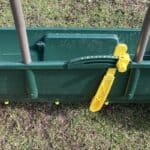Our site is reader supported, this means we may earn a small commission from Amazon and other affiliates when you buy through links on our site.
Just recently, I decided I wanted to make one of my flower beds narrower and increase the size of my lawn. I did this as I wanted to reduce the amount of weeding I have to do and also make my lawn wider so my children had more space to play.
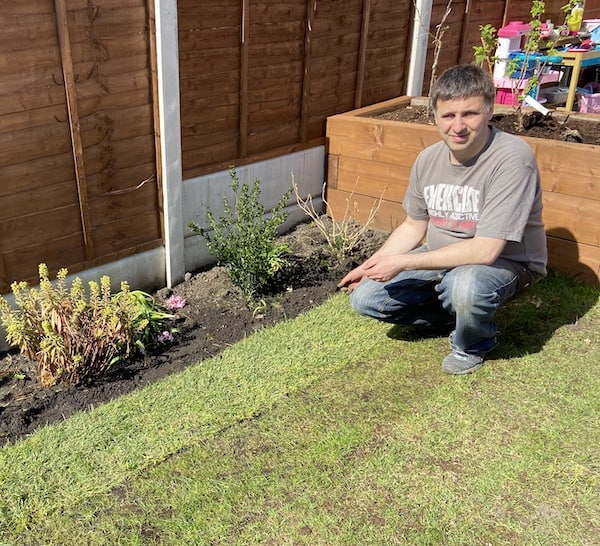
I documented the whole process so you can also learn how to extend an existing lawn too. So there are many reasons you may want to extend an existing lawn but first, you will need a few items to get the job done.
What you will need
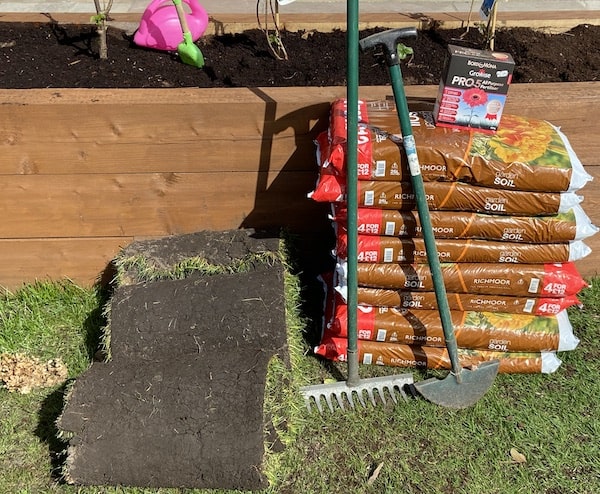
- Turf – this is usually sold by the square meter and is usually around 70 inches wide by 100 inches long.
- A lawn edger to cut the turn (could use a spade if you don’t have one)
- Garden spade
- Soil or gravel rake
- Strimmer (optional)
- Garden topsoil
- Multipurpose feed such as bone meal, growmore or fish blood & bone or similar
How to extend your lawn
First off, if you have a curved lawn, it will be much easier if you cut the lawn edge straight before starting. If you still want the edge of the lawn to be curved, you can cut the curve into the new turf you lay at the end.
Step 1
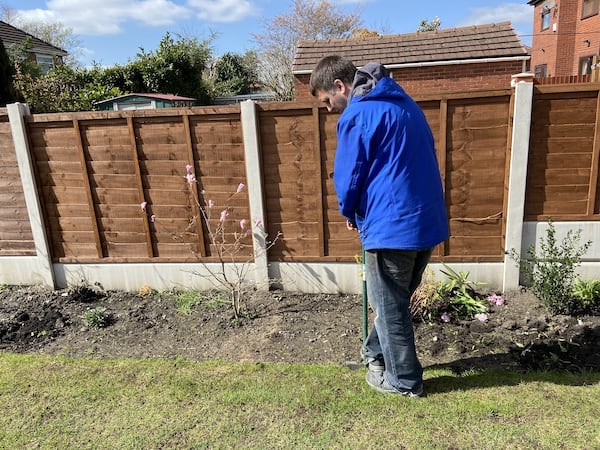
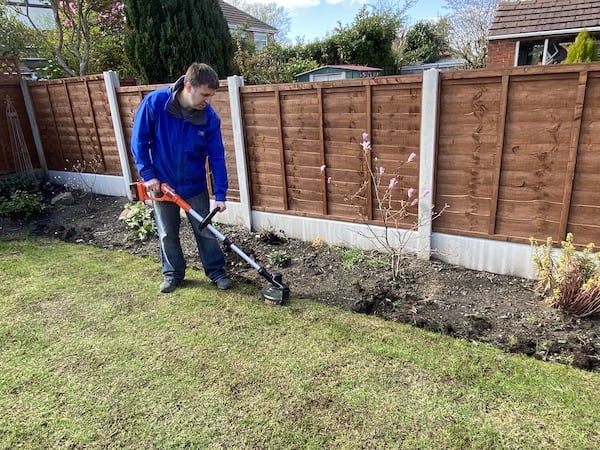
The first step even if you have a straight lawn as I did, is to tidy the edge of the lawn to make it as straight as possible. To do this I used a lawn edger to trim the lawn slightly and also my cordless strimmer (I did a review here) to strim the edge of the lawn low and make it as tidy and as straight as possible.
Step 2
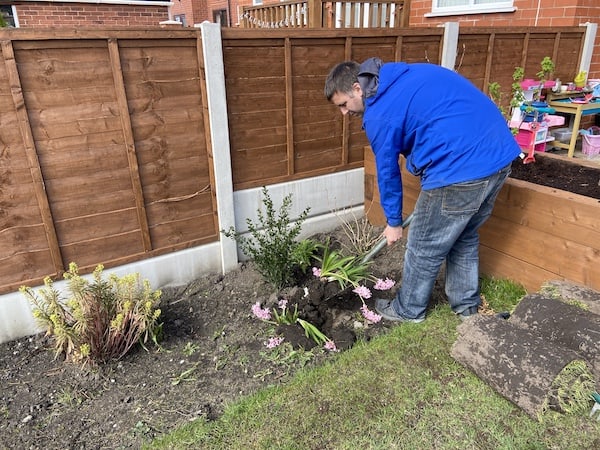
Next, you need to remove any weeds, large stones and plants that may be in the way of where you will be extending your lawn. I had to remove some perennials but I found a new home for in a different area of the garden.
Step 3
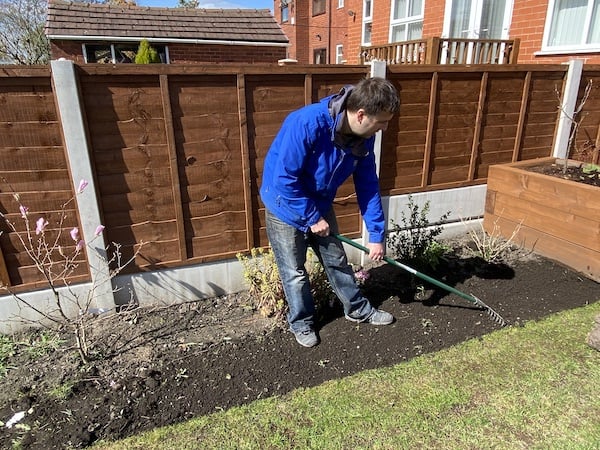
Next you want to rake the area as level as possible where you will be laying your new turf, this will give you another chance to remove any large stones as well as get an idea of how much new topsoil, if any, you will need to lay the new turn on.
Step 4
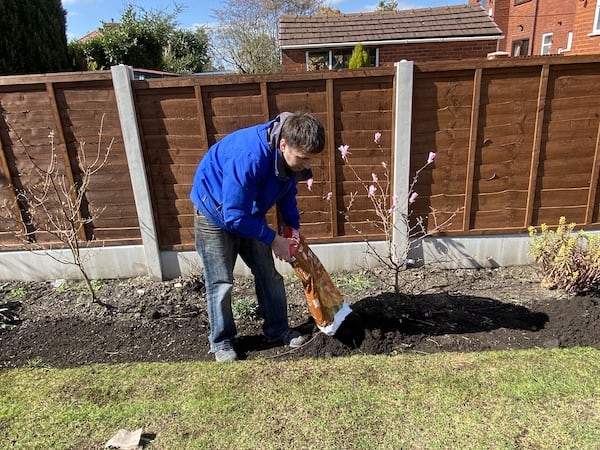
Now that the area is level, you can now apply some new topsoil to get the soil to the same level as your lawn is already at. In my case, I needed around 12 bags of topsoil because my lawn was raised quite high so I needed to build the soil up around 3 inches. so that I could have my new turn at the same level as my lawn which you obviously want to do. Once you have done this, use a rake to level the soil out evenly.
Step 5
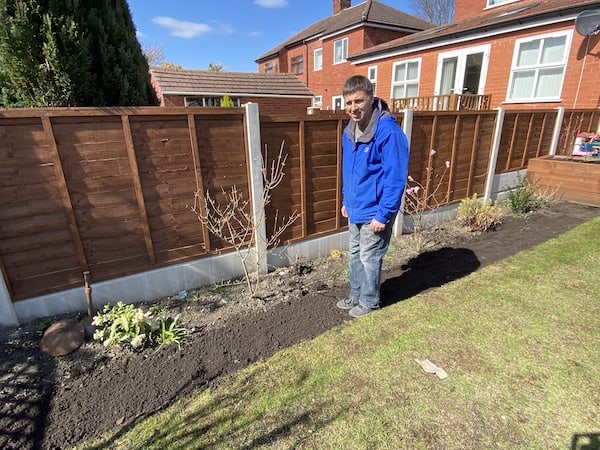
Next, you want to tamp down the soil to get rid of any air pockets. This is best done by walking on your heels and compacting the soil down. As some more topsoil if needed and then tamp down again my walking on the soil. Once its level and tamped down firmly, lightly rake the area again.
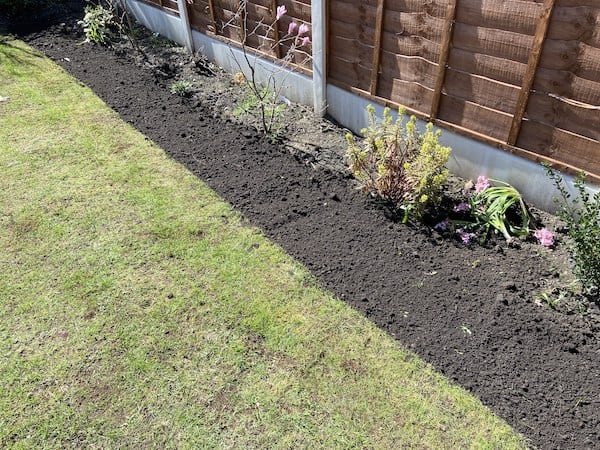
Step 6
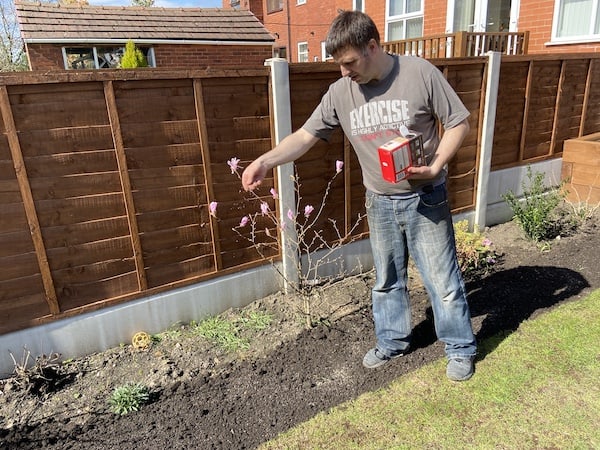
Now that the ground is prepared it should be level and ready to lay the turf but there is just one more step that can really help give the lawn the best start. Lightly apply some fertiliser such as bone meal, growmore or fish blood and bone to the soil. Now lightly rake this into the soil.
Step 7
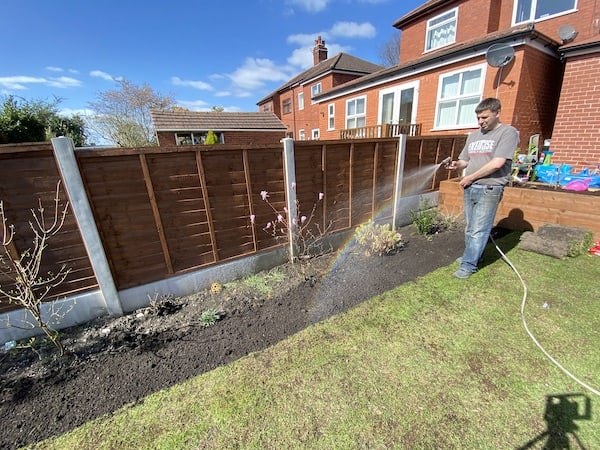
Water the soil before rolling out the turf, this is important as if you apply turf directly on top of fertiliser, it can burn the roots and damage the turf.
Step 8
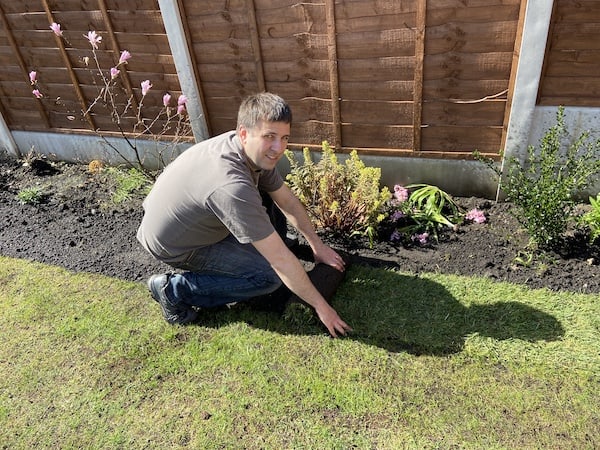
Now it’s time to roll out the turf. Starting at one end, carefully roll out the turf and butt it right up to the existing lawn. If you need to do more than one run, you will need to lay the turn like brickwork so it blends in better. Once rolled out, firm it down by hand or with the end of the rake and water in well.
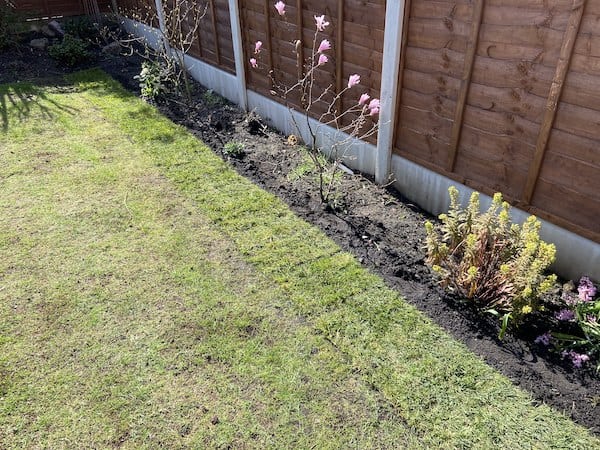
Continue to water daily especially in warm weather as it can shrink. If this happens or you get any gaps, simply add some topsoil to the gaps and sow a little grass seed.
That’s it, you should of now successfully extended your lawn. Within a few weeks, it should start to root, once it’s rooted, give it a mow but not too close. You want to drop the mower height in stages until you get the desired height you want.


